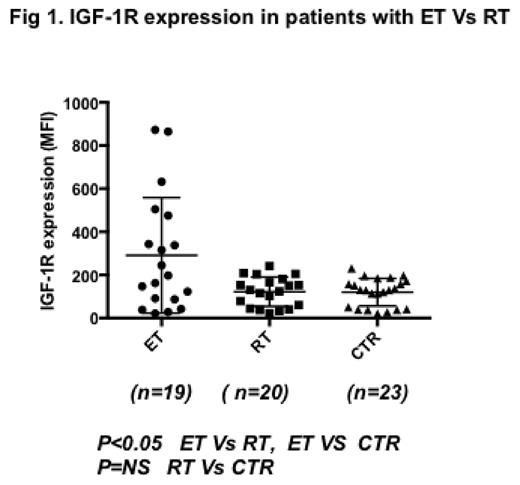Abstract
Introduction. The 2016 revision to the World Health Organization (WHO) classification of myeloid neoplasms and acute leukemia lists the criteria for the diagnosis of essential thrombocythemia (ET ) as 1) Platelet count more than 450 x 109/L 2) BM biopsy 3) Not meeting WHO criteria for BCR-ABL CML, PV, PMF, myelodysplastic syndromes, or other myeloid neoplasms, 4) Presence of JAK2, CALR, or MPL mutation . The minor criteria included Presence of a clonal marker or absence of evidence for reactive thrombocytosis .Among these criteria , the most reliable criteria for diagnosis of ET is the "presence of JAK2, CALR, or MPL mutation", these mutually exclusive "driver" mutations with respective incidences of 55%, 25%, and 3% , so approximately 17% are so called "triple-negative ET ". These 17 % cases will depend on other criterias to make a definite diagnosis as ET. Bone marrow criteria is helpful in some cases but in many cases, the differential from re-active thrombocytosis (RT) could be misleading , So a substantial portion of triple-negative patients with ET have evidence of polyclonal: the use of cytoreductive drugs in these patients is questionable . We have recently published using IGF-1R quantification by flow cytometry could be helpful in differentiating polycythemia from secondary polycythemia . Now we also found quantification of IGF-1R by flow cytometry to be helpful in the diagnosis of ET from reactive thrombocytosis. Materials and Methods: Nineteen patients with ET (treatment naive), 20 with reactive thrombocytosis (RT) (5 sickle cell disease, 5 arthritis, 5 iron deficiency, 3 metastatic Cancer, 2 with infection, one with bleeding) and 23 normal volunteer controls were studied. Flow cytometry: MNC were isolated from peripheral blood then incubated with fluorophore-conjugated primary antibody or isotype controls for 30 min at room temperature and analyzed by FACS Calibur System (BD Biosciences, San Jose, CA). PE-conjugated antibody against human IGF-1R was purchased from R&D Systems. Results: Untreated ET patients had significantly higher IGF-1R (290.8, 86.83-475.2) than RT patients (127.0, 47.75-177.2),(P<0.05) and normal controls (129.7, 41.40-172.2), (P<0.05). No statistical differences were found between RT and controls. Patients with ET treated with hydroxyurea were found to have a significantly lowered IGF-1R expression (data not shown). A Logistic regression shows ET is a statistically significant (p=0.035) predictor of patient's groups (ET or 2nd ET). A cutoff value of 220 was chosen from the Logistic regression to predict patient's group, an ET value >=220 means that a patient belongs to ET group, with sensitivity of 47.4% and specificity equal to 94.7%. Conclusion: Quantification of IGF-1 receptor may be useful in the differential diagnosis of Essential thrombocythemia from reactive thrombocytosis, especially in those cases where no driver mutations were detected (triple negative).
Wang: Celgen: Research Funding.
Author notes
Asterisk with author names denotes non-ASH members.


This feature is available to Subscribers Only
Sign In or Create an Account Close Modal